Stay in the know on all smart updates of your favorite topics.
Circular City Challenge Berlin, Munich, Stuttgart, Vienna
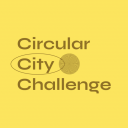
The Circular City Challenge calls on innovators of the Circular Economy to find answers to the challenges of the transformation to a circular urban system.
To do so, @CircularBerlin, @CircularMunich, @materialkreislauf. und #circonnact are going on a joint search for circular and innovative approaches to advance the Circular Economy in cities and to explore and implement promising solutions together.
Do you feel like this post was written for you? Are you working on an innovative solution that can support the transformation of cities to the Circular Economy?
Do you want to join a network full of innovators who share the same visions and interests? Do you want a real-lab where you can adapt your circular-enabled solutions as close to existing needs as possible?
Then we look forward to receiving your application for the Circular City Challenge!
By participating in the Circular City Challenge, you will advance both your own project and your local Circular Economy!
Through joining the challenge you will get a unique chance to demonstrate the potential of your work directly to local stakeholders within the Circular Economy. You will have the opportunity to interact with representatives of the cities to enable you to tailor your solution to the existing needs of the city. On top of this, you will benefit from the network of our established partners, which will contribute to and increase the reach and visibility of your project.
For this, your project should address at least one of the four key challenges of the Circular City Challenge: Resource Management, Digital Technologies, System Infrastructure and Consumption & Awareness. We are looking for innovators who are motivated to help shape the local transition to a Circular Economy, be it local organisations, entrepreneurs or companies.
Did we pique your interest and now you want to be part of the Circular CIty Challenge? Then visit the Circular City Challenge website https://circular-city-challenge.com/ for more information on how to apply and to fill out the application form.
The application starts from 01.02. and runs through 31.03.22
Scientific Conference | Reinventing the City
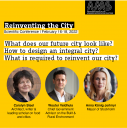
From February 16 to 18, 2022 AMS Institute hosts the scientific conference "Reinventing the City". Working on urban challenges requires cooperation on a multi-stakeholder level. This is what we do as an institute, and is also the primary goal of the conference. "To share and discuss multidisciplinary insights and inspire each other to take actionable steps towards sustainable urban transformations."
The conference will bring together over 200 urban innovators ranging from scientists, policymakers, students to industry partners. We will discuss how cities can transform their systems on a metropolitan scale, to become more livable, resilient, sustainable and offer economic stability. Don't miss out on this amazing event, and register now.
This is event is hosted by AMS Institute in collaborations with the City of Amsterdam.
Inspiratietour Bouw

Om dieper in te gaan op de mogelijkheden van circulair bouwen, organiseren we samen met de provincie Noord-Holland een online circulaire inspiratietour waarbij we ‘langsgaan’ bij belangrijke spelers in de circulaire bouwsector. Samen bespreken we de voordelen, uitdagingen en mogelijkheden voor bedrijven om het meeste uit circulaire bouweconomie te halen.
De bouw vormt de grootste materiaalopslag en afvalstroom in de economie. Elk jaar wordt alleen al in de Metropoolregio Amsterdam 1,4 miljoen ton sloopmateriaal verwerkt, met een potentiële waarde van €688 miljoen. Tegelijkertijd drukt de productie van nieuw bouwmateriaal zwaar op het milieu. Met hoogwaardige recycling, demontabel én modulair bouwen kan die waarde benut worden en het milieu worden gespaard.
Circulair bouwen betekent het ontwikkelen, gebruiken en hergebruiken van gebouwen, gebieden en infrastructuur, zonder natuurlijke hulpbronnen onnodig uit te putten, de leefomgeving te vervuilen en ecosystemen aan te tasten. Bouwen op een wijze die economisch verantwoord is en bijdraagt aan het welzijn van mens en dier.
Kansen
De bouw heeft zoveel facetten, dat bedrijven en bestuurders met veel strategieën aan de slag kunnen om de bouw circulairder te maken. Vijf belangrijke methodes zijn:
- Hoogwaardig recyclen van sloopafval, zodat er minder primaire grondstoffen nodig zijn;
- Administreren van materialen, zodat waarde van grondstoffen behouden blijft;
- Demontabel bouwen, zodat onderdelen van een gebouw hergebruikt kunnen worden;
- Modulair bouwen, zodat gebouwen aangepast kunnen worden aan nieuwe functies;
- Ontwerpen voor collectief gebruik, zodat bewoners gebouwen en spullen kunnen delen.
Voor wie
Voor MKB in Noord-Holland en iedereen die wil weten hoe je een bedrijf (meer) circulair kunt maken, of dat nou je eigen bedrijf is of dat van je werkgever.
Sprekers
Worden binnenkort bekendgemaakt
LinkedIn group
Word lid van onze community op LinkedIn voor het laatste nieuws en evenementen over circulariteit in Noord-Holland!
Over provincie Noord-Holland & Impact Hub Amsterdam
Provincie Noord-Holland en Impact Hub Amsterdam werken samen om het circulaire ecosysteem in de provincie te versterken. Als onderdeel van deze samenwerking organiseren we diverse evenementen en gratis masterclasses.
AMS Urban Living Lab Winter School
AMS Institute is hosting the fourth online edition of the Urban Living Lab Winter School! A fun and intense training week with national and international city makers, urban change-makers, nosy researchers, experimental explorers, and hopefully you!
In this week, Urban Professionals and Researchers will explore the Urban Living Lab Methodology by working in mixed teams. Along with real-life cases, the methodology will unfold step by step.
Are you looking for some in-depth training for urban experimentation in multi-stakeholder surroundings? Please register for our Winter School.
Spots are limited, max 20 persons, so register as soon as possible via our AMS website.
Cases we will dive into of this edition:
- Circular Solar Panels fighting for Energy Poverty, Amsterdam Zuidoost
together with Zonnext
-Local Inclusive Future Energysystem (LIFE), Amsterdam Zuidoost
Date: March 7-11, 2022
Time: Full time, 9 AM-5 PM CET
Language: English
Where: Online (zoom)
Participants: Researchers, urban professionals from the public and private sector with a minimum of 5 years experience. (15 - 20 participants)
AMS Partners or teams over 3 persons, please contact Femke Haccou
femke.haccou@ams-institute.org
What do you envision for the city of the future?

Cities occupy just 3% of the earth’s land surface, but are home to more than half of the world’s population. When we envision cities of the future, interconnectedness with nature, communities, and resources is at the heart of it all. Our team put together a cities vision taking us on a vivid journey to a city in 2050. Lush, green, healthy, sustainable, and livable.
We hope that tangible, and positive image of what cities could look like in the future can bring different groups together, to build the right conditions and drive the actions to achieve it. Our vision is one of many such images, and we would love to hear from you about what you like, dislike, and what your city of the future looks like. In particular, we'd like to move away from a techno-futurist ideal.
Cities of tomorrow will emerge from the cities of today. Just as important as the conversations about what we would like to change, are the conversations about what we would like to keep! What would you keep, from your current city, for decades to come? Take a look and let us know what you think!
New Cities

We are building a new city in a national metaverse connected with a smart city and the Internet of People. Are you interested in such projects? We are looking for cooperation within the international community of builders of our Metaverse new and brand new Smart Cities.
NEOS Cities and Country
The New System consists of modern municipalities, cities and the Polish state managed from the bottom up by the nation, where decisions are made on the basis of reliable and credible information, and thanks to Blockchain technology, everything is transparent and open to the public.
NEOS Country Towns and Villages services include:
- Setting up companies in DAO blockchain
- A city with services for users
- IVoting or voting over the Internet
- Simulation of city development scenarios
- City management like a game
- Export of tried and tested solutions
Details: http://smartcitiespolska.org/en/new-operating-system-for-smart-cities/ http://smartcitiespolska.org/en/new-warsaw-19-district-of-the-future-2025-2050/
Bouw op Slachthuisterrein: alles wordt opnieuw gebruikt

Haarlem werkt aan een duurzame stad. Aan de bouw en renovatie
van gebouwen worden dus duurzame eisen gesteld. Op het terrein van het
voormalige Slachthuis komt een nieuwe wijk waarvoor alles wordt
gerecycled!
Op het Slachthuisterrein komt een aantrekkelijk en duurzaam
nieuw stukje stad. Alles wordt hergebruikt, van asfalt en koelceldelen
tot stenen en hout. Ontwikkelcombinatie BPD – De Nijs B.V. kreeg de
opdracht van de gemeente. Projectmanager Theresa Manoch van BPD vertelt
over de duurzame bouwaspecten.

Goedemorgen
Theresa: “Net als de gemeente vinden we het belangrijk dat het nieuwe
terrein een plek vóór en dóór de buurt is. Door leuke dingen te
organiseren zoals concerten en koffiemomenten, leren mensen de plek
kennen. We horen van buurtbewoners dat ze dit waarderen.” BPD won eind
2018 de aanbesteding met het concept ‘Goedemorgen’. Hierin wordt
rekening gehouden met ruimte om elkaar ontmoeten. Ook is er een
mobiliteitsplan (minder plek auto’s maar meer laadpalen), worden
monumenten hersteld en het terrein aan de buurt teruggegeven.
Gerecycled asfalt
Tijdens de bouw wordt aan de buurt en duurzaamheid gedacht. Zo is een
heitechniek met holle draaipalen gebruikt dat voor minder geluid zorgt.
Op het bouwterrein ligt asfalt van 97% gerecycled materiaal omdat zware
bouwauto’s op asfalt minder lawaai maken dan op bouwplaten. Ook wordt
er elektrisch gesloopt, met minder geluid en CO2-uitstoot.
‘Alles wat er is, houden’
“De basisgedachte is dat we zoveel mogelijk van de gebouwen in tact
laten. Bij alles wat er tijdens het renoveren uit de panden wordt
gehaald, stellen we de vraag ‘wat kunnen we ermee doen’? Zo is het
weggehaalde beton gebruikt voor de fundering van de wegen. En als
hergebruik op het terrein niet lukt, kijken we waar het wel naar toe
kan. Zo zijn oude koelceldelen naar Kenia gegaan en daar weer opgebouwd
bij een rozenkweker. Dat klinkt misschien niet duurzaam maar als ze
nieuw zouden worden aangeschaft, gaan ze ook vanuit Europa met een schip
naar Afrika.”
Water en regentonnen
Op het terrein komt een waterberging met een waterspeelplein. Dit
zijn tegelijkertijd ook plekken waar een teveel aan regenwater wordt
opgevangen. Hemel- en rioolwater wordt gescheiden, zodat regenwater in
de grond kan verdwijnen. Het dak van het Slachthuis wordt voor een deel
vergroend om regenwater vast te houden. Ook krijgen alle nieuwbouwhuizen
een regenton om regenwater te gebruiken om bijvoorbeeld planten water
te geven.
Warmte uit zomer, gebruiken in de winter
Theresa: “Op het terrein komt een warmtekoudebron. Met deze techniek
wordt ’s zomers overtollige warmte in het grondwater opgeslagen voor
gebruik in de winter. Er komen drie bronnen met een centraal systeem
waarmee we de bestaande bouw verduurzamen. En het mooie is dat ook
huizen om het terrein heen kunnen worden aangesloten op dit systeem!”
Muziek, poppodium en theehuis
Op het Slachthuisterrein staan straks ruim 160 nieuwbouwwoningen en
in de oude, monumentale gebouwen zullen voorzieningen voor
buurtbewoners, bezoekers en ondernemers zijn. Er komt een muziekschool,
poppodium, theehuis, restaurant en bedrijfsruimten voor startende
ondernemers. Het wordt een bijzondere ontmoetingsplek met een rijk
Haarlems verleden!
Naar verwachting wordt eind 2023 het Slachthuisterrein opgeleverd. Meer informatie op Slachthuisterrein Haarlem.
Participation in RESILIO

This is the second part of a 5-piece movie on RESILIO blue-green roofs. We meet an expert on participation from the Amsterdam University of Applied Sciences ánd a resident from a social housing association de Alliantie complex on which a RESILIO Smart Blue-Green Roof just has been realized. We asked ourselves during the whole lifespan of RESILIO: How can we make smart sustainable solutions a hot and urgent topic for our citizens?
#participatie #socialhousing #heatstress #verduurzaming #resilientcommunities #residentengagement #indischebuurt
Presentations Urban Ecology: making the living city
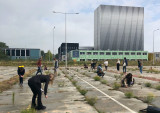
How do we develop sustainable and nature-inclusive cities? Starting from this question, earth-scientist and artist Esmee Geerken created the course 'Urban Ecology: building as being' for the Rotterdam Academy of Architecture. Young architecture professionals examined crossovers between ecology and architecture, and ways to apply this by building in interaction with the environment.
Within a case study at the Amsterdam Science Park, they designed building proposals in which complexity, biodiversity, ecology and self-organization are central. Their ideas show us possibilities on how we can make urban areas more inclusive, sustainable and diverse.
On Saturday January 15 from 15:00 to 16:30 hrs, they will present their designs. Register now to attend the presentations online.
Meet the members of Amsterdam Smart City! Dirk Dekker: ‘There’s a connection between all of the individual elements that make a city what it is’

Dirk Dekker is the co-founder and CEO of Being, a real estate developer that develops sustainable environments with the context of these environments in mind.
“Being part of something bigger: that’s our tagline. The work we do is not about us as a company but about the bigger picture. We are part of something bigger and want to positively influence the real estate market in the Netherlands. We also want to prove that you can do something good for society and make a profit.
We’re not content to simply discover a location to build on; there has to be a need for us to add a positive impact too. For us, this means adopting a holistic approach to projects based on four impact pillars: personal impact, public impact, ecological impact and economic impact. We research each site’s history and talk to various people: an environmental psychologist or city biologist, for example. We interview stakeholders: future users and local residents and organisations. As you might expect, we put together a business case as well.
As I see it, the different perspectives don’t result in concessions but in the creation of more value, which isn’t always possible to express in euros. One good example of this is YOTEL, a hotel we developed in the up-and-coming Buiksloterham urban district in Amsterdam. Interviews showed that neighbours wanted to see more public green spaces and accessible hospitality. We listened and made sure both were included in our design. The hotel has integrated into the neighbourhood well, from both a social and sustainable point of view. We also ‘greened’ the rear façade of The Pavilion office building in the Zuidas business district, because it faces a graveyard. It’s important for people, planet and profit to be in balance.”
Biophilic design
“I’m inspired by the Bjarke Ingels Group (BIG) philosophy on architecture too. BIG does research to design well in extreme conditions—in the dessert or on the moon, for example. By carefully considering the context, it becomes possible to design something that complements the environment in question. Add nature into the equation and you have what is referred to in the industry as ‘biophilic design’. Mother Nature’s research department has far more experience than all the rest of us put together, so there’s a huge amount for us to learn from.
My ideal city is one with views that extend beyond the four years of a political term of office. It’s a place where residents are involved in decision-making, which is very achievable given the amazing digital resources at our disposal today in 2021. For example, I live in Amsterdam-West, where residents have been asked to vote on the € 300,000 our urban district has to spend on green and social initiatives suggested by citizens. That’s how you create a city together.”
Networks
“Green needs to be added not just next to buildings but on and in them too. And not just in stiff flowerbeds or like a green wallpaper of sorts; a far more natural approach is vital. Trees and plants communicate with and learn from each other via underground nature networks. Our job is to make sure this is possible in urbanised environments. The Fantastic Fungi Netflix documentary is a really useful programme to watch on this subject.
There’s a connection between all of the individual elements that make a city what it is. I would like to see politicians and the business sector immersing themselves in these networks far more and also looking very closely at everything happening on platforms like Amsterdam Smart City. Networks like this are essential for the future of our city and for connective growth.”
If you’d like to get in touch with Dirk, you can find him on this platform.
This interview is part of the series 'Meet the Members of Amsterdam Smart City'. In the next weeks we will introduce more members of this community to you. Would you like to show up in the series? Drop us a message!
Interview and article by Mirjam Streefkerk
The interconnected city: Imagining our urban lives in 2050

Our cities are evolving. Fast. How can we ensure they are sustainable, liveable, and healthy?
Metabolic has developed a nature-inclusive, community-centered, and circular city's vision.
This vision of the "ideal" city is only one of many. What's your favorite? Please share the story, vision, book, podcast, or image that best represents the city you hope to live in, one day.
Available for download now: Mayor’s Manual Book Edition

What advice would you give to mayors of cities worldwide? In the first season of the Mayor's Manual Podcast, Sacha Stolp (Director of Future-Proof Assets, City of Amsterdam) and Kenneth Heijns (Managing Director of AMS Institute) have embarked on a journey to discuss solutions for urban challanges together with over 50 frontrunners from different countries working for governmental institutions, knowledge institutions and businesses. Each frontrunner was asked what advice they would give to Mayors and cities worldwide. The Mayor’s Manual Book Edition is a compilation of these advices accompanied by 6 Essays written by guest writers. The book is meant not only to inspire, but also to provide actionable recommendations for cities globally.
We invite you to read the first Mayor’s Manual Book and share
your insights with us!
Download the book for free on our website or by clicking here.
Currently, we are working on a Dutch edition so keep an eye on our site
for updates!
Find the Mayor’s Manual podcast on Spotify, Apple Podcast and Google Podcast & view our trailer or go to www.mayorsmanual.org
Meet the members of Amsterdam Smart City! Ronald Smallenburg: ‘We need creativity for a new generation of infrastructure’
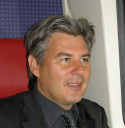
Ronald Smallenburg is co-founder of Pontiflex, a start-up which designs modular bridges out of sustainable materials.
“My business partner Joris Vermeulen and I started Pontiflex a few years ago. A key motivator was the state of the Nescio Bridge for bicycles spanning the Amsterdam-Rhine Canal between the Amsterdam suburb of IJburg and the city itself. This €15 million bridge opened in 2006, but only a few years later, its steel started to rust. It served as an inspiration to start thinking about designing more sustainable bridges on a competitive budget.
Joris asked me to join him in searching for solutions. We discovered there is a huge market for bridges and other infrastructure. A major portion of the post-WW2, so-called ‘boomer infrastructure’ in the Netherlands is at the end of its lifetime—just as it is in most Western countries. It needs to be replaced, repaired or refurbished as well as expanded, especially given the growth in cycling seen everywhere in the Western world. At the same time, society requires more sustainability. We saw excellent business opportunities.”
Alternative materials
“At Pontiflex, we believe we all need to find alternatives to classic steel and concrete, the building sector’s key materials. Their production is one of the most polluting processes in terms of CO2 emissions. That’s why we started to look for sustainable alternatives to use in new construction. They include FSC-certified wood, a revolutionary bio-composite, recycled plastics and cementless concrete made from old asphalt and industrial waste. Over the years, we were granted a total of four subsidies to finance our search for the best sustainable materials to use in new bridge construction.
Our answer to modern-day challenges is to double sustainability. Our modular bridges combine easy-to-build-and-adapt bridges with circular materials. Every element of our bridges can be replaced or reused at any time, independent of each other. This means that we can quickly build a bridge, or disassemble and move it if necessary, or adapt to new conditions, including length and width.”
Conservatism
“Developing sustainable infrastructure is challenging given the conservatism in the sector. I believe that the public sector and the industry need vision and boldness. Vision for a sustainable infrastructure, boldness in daring to design and implement new constructions and materials, either as a public client or as an architect, engineer or contractor. Calculated risks are the key words here. Do your research and test thoroughly, but dare to be different and accept your losses or approve your gains.”
New generation of infrastructure
“We participate in GO!-NH, an innovation program of the province of Noord-Holland in the Netherlands. With programs such as these, we expand our network and learn from the experiences of other entrepreneurs. I’m still new to Amsterdam Smart City, but I’m open to new connections. I’m also happy to share my entrepreneurial experience in the field of sustainability.
The Amsterdam Metropolitan Area, and the Netherlands in general, offers a lot of creativity. Here, there are many people with different backgrounds and ideas. The construction industry will benefit greatly if we tap into this diversity—not only because we need more technicians, but because we also need people who think differently. Women, migrants and refugees can provide the industry with new input and new creativity, which is crucial for a new generation of infrastructure.”
If you’d like to get in touch with Ronald, you can find himon this platform.
This interview is part of the series 'Meet the Members of Amsterdam Smart City'. In the next weeks we will introduce more members of this community to you. Would you like show up in the series? Drop us a message!
Interview and article by Mirjam Streefkerk
Looking for community organisations in Amsterdam that deal with climate adaptation!
I am currently conducting research on climate adaptation strategies in London and Amsterdam for the university of Amsterdam. I am approaching this topic from a social justice lens, i.e. understanding how the city is incorporating social justice in its climate adaptation strategies and policies.
I am currently looking for community organisations that are involved in projects that are directly or indirectly involved with tackling the urban heat island effect. This could be projects that seek to increase green spaces, improve how homes perform during heatwaves or even raise awareness on these issues in their community.
Any help is appreciated!
Shaping development in cities to combat climate change

Ever wondered what life would look like in a sustainable, regenerative city?
With cities occupying only 3% of the global land surface but contributing to 70% of emissions, positive change can have a big impact. Metabolic CEO Eva Gladek reflected on how we can all become city makers. In light of COP26, it might be time to refocus on our cities.
Ready to take action? Find out how in the link below.
Kijken voorbij de Floriade | Groen & Gezond Almere Podcast serie 3!
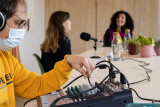
Een groene en gezonde wereld begint in je eigen stad. Nergens in Nederland bouwen ondernemers en bewoners van zo dichtbij mee als in Almere. Verhalen van deze bewogen Almeerders hoor je in de podcast ‘Groen en Gezond Almere’.
Het is alweer tijd voor het derde seizoen, waarin Floriade Expo 2022 centraal staat, want die staat voor de deur! Het gebied rondom het Weerwater staat in de steigers, de groene loper wordt door de stad uitgerold. Maar wat houdt de Floriade nou precies in? En nog belangrijker: Wat blijft er allemaal over ná het evenement? De podcast wordt gepresenteerd door Kookboekenschrijfster, TV-kok en vooral betrokken Almeerder Nadia Zerouali. Nadia bespreekt de fysieke impact van de Floriade Expo op onze stad en spreekt met gebiedsontwikkelaars, energieleveranciers, bruggenbouwers en landschapsarchitecten.
Luister de eerste afleveringen van de podcast via Spotify, Soundcloud & Apple Podcast
Groen en Gezond Almere is het programma van de gemeente Almere waar jij mee kan bouwen aan de groene stad van de toekomst. Een groene en gezonde stad bouw je namelijk niet alleen, maar samen. Het platform laat lokale Almeerse initiatieven en projecten zien die de stad verduurzamen en klaarmaken voor de toekomst. Een inspirerend palet aan stadsmakers!
Join finale Amsterdam Science & Innovation Award online

The 9th of November, the Amsterdam Science & Innovation Award finale of 2021 will take place. Join us online and be a witness to exciting new ideas that will create a positive impact on society! Nine finalists will pitch their ideas and compete for three Innovation Awards in the categories Environment & Climate, Health and Society and € 10.000 to bring their idea a step closer to application. Also, three researchers will be honored with an Impact Award for their significant impact on society: Halleh Ghorashi (VU Amsterdam), Hergen Spits (Amsterdam UMC) and Jeroen Kluck Amsterdam University of Applied Sciences (HvA).
When: Tuesday 9 November 2021
Time: 15:00 - 17:00
Workshop: What's in IT for you? Scaling sustainable impact through IT innovations
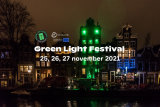
In the city center of Amsterdam, residents, companies and knowledge institutions are joining forces for a sustainable city center. We aim to preserve the cultural-historical heritage as well as prepare it for the future. This challenging area for sustainability asks for smart solutions. Upscaling is necessary in order to create historic and sustainable city’s of the future.
Scaling sustainable impact
In this workshop we look at what is necessary for (heritage) experts and property owners to be able to advise about sustainability faster and easier while still securing a high quality standard. We show that even with custom energy advises it is possible to have a scalable approach. In this workshop, the brand new advisory tool for sustainable historic buildings is launched. Tom Huizer will give a demonstration of the tool on behalf of De Groene Grachten and share the results of the first 100 recommendations made using this tooling in the Green Light District.
The workshop takes place on Thursday 25 November. Sign up for Workshop 3 on the registration form to attend.
Green Light Festival
This workshop is part of the Green Light Festival. Two years ago we renamed the Red Light District to the 'Green Light District'. Together with residents, companies, knowledge institutions and partners, we are transforming the city center of Amsterdam into a sustainable and future-proof heart of the city. Discover how we can make a sustainable impact together during the Green Light Festival. What have we achieved together in recent years? And what will the next 10 years look like? In interactive workshops, walk&talks, events and symposia you get to know the area in a whole new way.
Join us in Amsterdam or online! Together we will color the city center green. We look forward to seeing you on November 25, 26, and 27 in the Green Light District!
View the program or sign up!
Green Light District
Green Light District is a collaboration between De Groene Grachten, NV Zeedijk, Municipality of Amsterdam, De Gezonde Stad, Rooftop Revolution, TU Delft and EIT Climate-KIC.
We work together with these partners and our community of residents and other frontrunners in the city. The project is part of the ‘Nieuw Amsterdams Klimaat’ and together we map out a smart route to a future-proof city.
Check out the Green Light District website!
Building a shared vision of the city - with LEGO!
Building the largest interactive LEGO model of the future city ever!
Imagine a model of the city; however, instead of a literal representation, this is a sculpture that holds ideas and dreams from citizens, policymakers, entrepreneurs and visitors about what the city might be like after we solve major transitional challenges (e.g. sustainability, energy, equality, smart).
What would it feel like to be in this city? What do people wish this future city to become?
the goal
A model of the city that contains the ideas that a diverse group of people have about how the city might emerge from major transitional change like climate adaptation, sustainability, equality, smart. Imagine the city from what might be and what opportunity change offers.
the form
A room-sized model built with LEGO in a public space and with interactivity (e.g. app / QR link / AR) to share the stories that this model contains.
the process
Lego is an powerful way to evoke and capture stories about how people think about something. Through a series of workshops, people from all parts of the city will be invited to share how they think about the future of the city and capture their stories in a collective model. An interactive installation opens up those stories to passers-by and other participants.
partners
finance, organisational, tech
call to action
Get in touch if you want to contribute to the realisation of the largest LEGO city vision model ever!
Circular Building in the Amsterdam Metropolitan Area

On November 18, we are organizing a LIVE event at C-Bèta about Circular Building in the Amsterdam Metropolitan Area.
The theme around this dynamic event is 'Future or Tradition?'.
We offer various stages to innovative thinkers and doers, tantalizing circular demonstrations and a lot of interaction!
We will, for example, look at old materials with a new perspective and we offer a insight the program of Regional Program Circle City.
When: Thursday, November 18th
Time: 13.30 walk-in, start program 14 - 18.00, including drinks
Location: C-Beta
Rijnlanderweg 916
2132 MN Hoofddorp
Stay up to date
Get notified about new updates, opportunities or events that match your interests.

